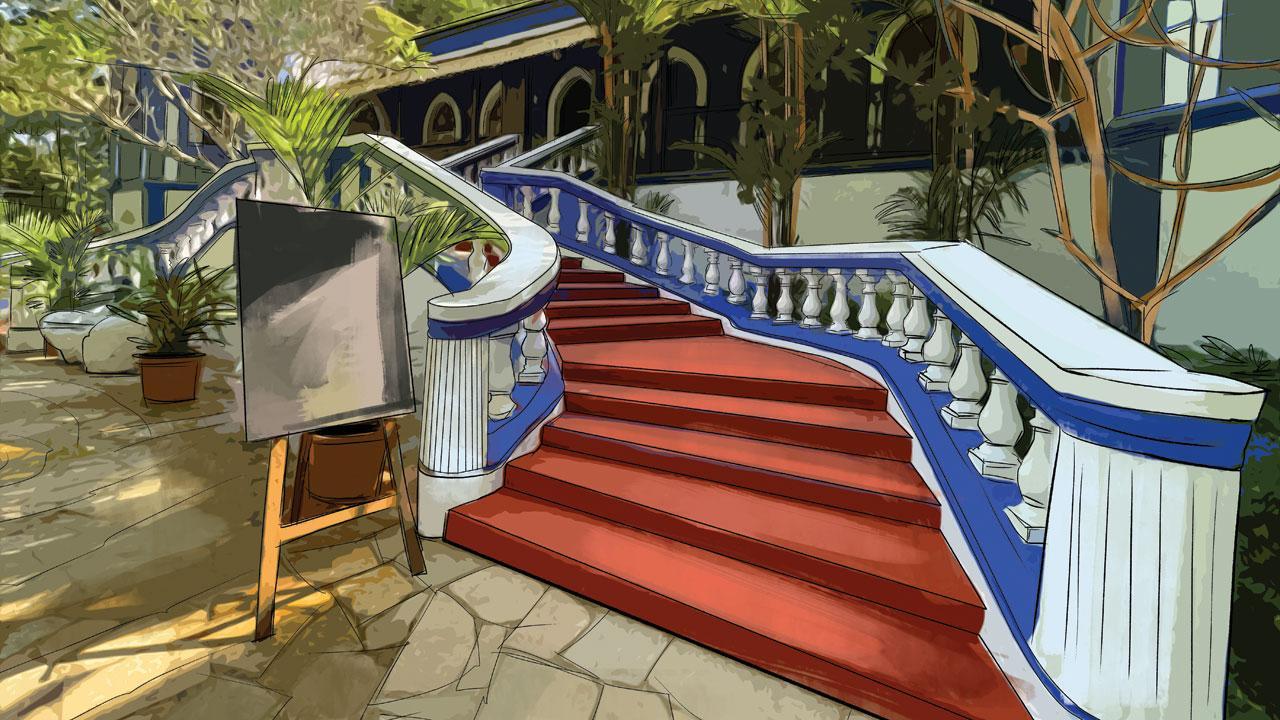It is a dream job in many ways, even though I have to go through increasingly higher volumes to seek those relatively limited very good films

Illustration/Uday Mohite
![]() Goa is really a state of mind. When I attend Film Bazaar/ International Film Festival of India, IFFI-Goa, it is usually on a tight leash. That’s because it’s close to the deadline for the Berlin Film Festival, and we have hundreds of submissions for the festival already. Of course, I’m particularly looking for a masterpiece or an exceptional film that may be still worth considering, despite it being way after the deadline for Berlin has passed.
Goa is really a state of mind. When I attend Film Bazaar/ International Film Festival of India, IFFI-Goa, it is usually on a tight leash. That’s because it’s close to the deadline for the Berlin Film Festival, and we have hundreds of submissions for the festival already. Of course, I’m particularly looking for a masterpiece or an exceptional film that may be still worth considering, despite it being way after the deadline for Berlin has passed.
ADVERTISEMENT
The Film Bazaar Recommends, Work in Progress Lab, Viewing Room and Co-Production Market are fertile sources. Though the volume of filmmaking in South Asia—which is my “territory” for the Berlin, TIFF Toronto and Jio Mami Mumbai Film festivals—is growing by leaps and bounds, it requires year-round research, and painstaking logging and sourcing of films from India in all languages. It also includes Bangladesh, Sri Lanka, Pakistan, Nepal, Bhutan and Afghanistan, especially to find original and marginal voices who may otherwise find it hard to reach me or the festival. It is a dream job in many ways, even though I have to go through increasingly higher volumes to seek those relatively limited very good films.
It is a terrible irony to be in Goa in the middle of hectic meetings, film screenings, panels and more. So, after a few breathless work days, I spirit away Dennis Ruh, Director of the European Film Market of the Berlin Film Festival and my colleague, for a slow morning, to savour many delights pottering around the older parts of Panjim. Goa was liberated from the Portuguese as late as 1961, after about 450 years of Portuguese rule. We potter around the Fontainhas, the Latin Quarter, with its rich legacy of Portuguese culture, its streets with jaunty coloured houses—blue, yellow, peach—sometimes with a statue of a cockerel crowing over a wall—windows with mother-of-pearl shells, azulejos (blue tiles), streets names like Rua 31 de Janeiro, with the Confeitaria 31 de Janeiro offering cakes and Goan sweets such as “Bebinca, Dodol, Doce, Pinag and jujubes.”
Also read: Mumbai and Goan youth take flight: The skateboarding revolution
We linger at the Church of Our Lady of Immaculate Conception, a Portuguese Baroque church, with its trademark, freshly whitewashed, criss-crossing steps. Then we go to that charming oasis, the Sunaparanta Goa Centre for the Arts, on the top of Altinho hill. They open only at 10 am, so until then, we chit-chat in the gorgeous, mosaic tiled open air amphitheatre in the garden, with frangipani blossoms scattered around, as sprinklers spray water over a well-kept lawn. Bulbuls, kingfishers and squirrels gambol in the tall trees, as we get a glorious view of the city sprawled below. The Centre has exhibition galleries, a library, and a café winding around an airy central courtyard with trees and huge pots with waterlilies. We linger over coffee. It’s a beautifully restored bungalow, with a red Mangalore tile roof, Minton tiles in the passageways, and picturesque blue-and white balustrades going down to the lawn. Beyond the library windows, butterflies bebop over tangles of wild flowers.
On the Mandovi river, casino ships are anchored—Deltin Royale, Majestic Pride, Big Daddy. Years ago, I’d attended a filmi party aboard one of these, which included a bevy of stunning, blonde, busty Russian dancers, wearing next to nothing, strutting about with red feathers in their hair, as the eyes of the gobsmacked local middle-class Indians popped and waved on their stalks like those of fiddler crabs.
The IFFI logo and giant filmy cutouts decorate the roundabouts, including Ram Charan as Lord Ram from RRR, in a saffron dhoti and bare torso, red tilak and janve (sacred thread), with a bow and arrow in one hand, and a gun in the other. A reminder that the merger of the sacred and violent is complete.
Meenakshi Shedde is India and South Asia Delegate to the Berlin International Film Festival, National Award-winning critic, curator to festivals worldwide and journalist.
Reach her at meenakshi.shedde@mid-day.com
 Subscribe today by clicking the link and stay updated with the latest news!" Click here!
Subscribe today by clicking the link and stay updated with the latest news!" Click here!










